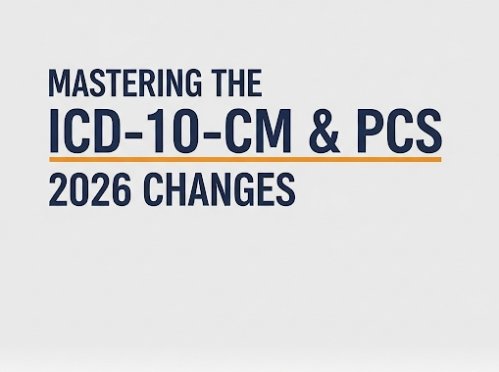The healthcare landscape continues to evolve, and with it, so do the coding standards that impact clinical documentation, billing, and compliance. The ICD-10-CM (Clinical Modification) and ICD-10-PCS (Procedure Coding System) updates for 2026 are set to bring important changes that every healthcare professional, coder, and compliance officer needs to understand.
These updates not only reflect advancements in medicine but also address areas of ambiguity, refine coding accuracy, and strengthen data reporting for public health and reimbursement. Mastering these changes is critical to ensuring seamless transitions, accurate claims, and minimized compliance risks.
Why the 2026 ICD-10 Updates Matter
- Improved Coding Accuracy – Updates reduce coding errors and ensure clearer representation of diagnoses and procedures.
- Alignment with Medical Advances – New codes reflect emerging diseases, technologies, and treatments.
- Better Data for Public Health – Updated classifications enhance disease tracking, outcomes research, and health policy planning.
- Compliance & Reimbursement – Staying up to date helps avoid claim denials and potential penalties.
Key Highlights of ICD-10-CM 2026 Changes
- New Diagnosis Codes: Additions for conditions previously grouped under unspecified codes.
- Revised Terminology: Updates to reflect modern clinical language and reduce ambiguity.
- Expanded Subcategories: More granular classification for chronic diseases, infectious diseases, and mental health conditions.
- Deleted/Retired Codes: Removal of outdated or redundant codes to streamline usage.
Key Highlights of ICD-10-PCS 2026 Changes
- New Procedure Codes: Capturing innovations in minimally invasive techniques, robotic-assisted surgeries, and novel therapies.
- Refinements in Root Operations: Clarifications to reduce misclassification of surgical interventions.
- Technology-Specific Updates: Codes reflecting advancements in imaging, cardiovascular procedures, and transplant methodologies.
- Simplification Efforts: Elimination of underused or duplicative codes.
Preparing Your Team for the 2026 Transition
- Training & Education
- Conduct targeted workshops for coding staff and providers.
- Review the official guidelines published by CMS and NCHS.
- Audit & Documentation Review
- Identify areas most affected by the changes.
- Strengthen clinical documentation to support new codes.
- System & Software Updates
- Ensure EHRs, billing software, and coding tools are updated before the implementation date.
- Compliance Checks
- Align with payer policies.
- Monitor for potential claim denials in early adoption.
Practical Tips to Stay Ahead
- Bookmark the CMS and NCHS official update resources.
- Subscribe to professional associations like AHIMA or AAPC for early access to coding guides.
- Set up regular internal coding accuracy audits.
- Engage in live or recorded webinars to keep staff informed.
Final Thoughts
The ICD-10-CM & PCS 2026 updates will shape the way healthcare organizations code, bill, and report clinical encounters. By proactively preparing, coders and compliance professionals can avoid costly disruptions, ensure reimbursement accuracy, and contribute to higher-quality data for healthcare improvement.
Mastering these changes isn’t just about compliance—it’s about keeping pace with the evolution of healthcare itself.

